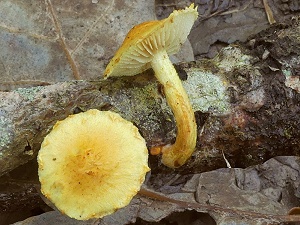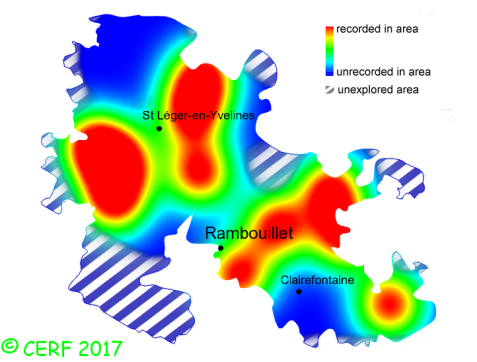| Pholiota tuberculosa (Schaeff.:Fr.) P. Kumm. |
|
|
|
|
|
|
The cap is yellow to orange. The cap surface is scaly, not viscid nor sticky. The stem is yellow, flaky under the ring, smooth above, bulbous, with a short-lived ring. The flesh is yellow, turning red-brown when exposed to air; its taste is bitter; the odour is faint; its texture is fibrous. The gills are pale yellow then rusty red, adnate, crowded . The spore print is rusty brown. This species is saprophytic. It grows on dead wood, in tufts, with willow. The fruiting period takes place from July to November.
Distinctive features : dry, yellow to orange cap, scaly especially towards margin; yellow white stem above ring zone, becoming orange red towards swollen base; on deciduous wood Pholiota tuberculosa is quite rare and scattered in the forest of Rambouillet, and is quite rare, more generally speaking . | ||
|
page updated on 14/01/18

